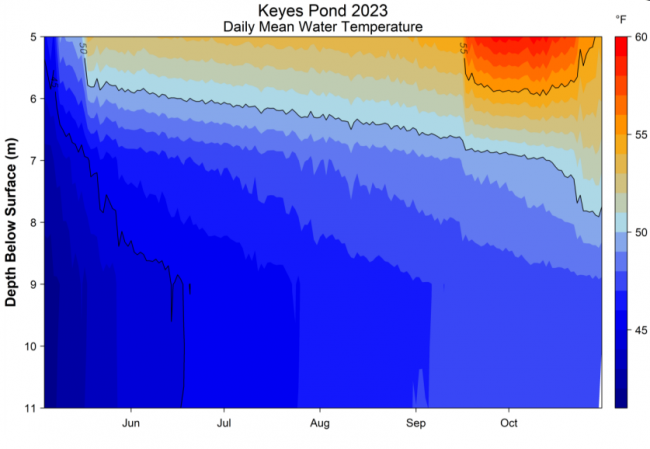
This year, the 1 meter and 3 meter temperature sensors malfunctioned. Note that in the graph above, the shallowest water depth is 5m (16 ft). The following data analysis relies on both working sensors and regular water monitoring data to characterize Keyes Pond’s 2023 temperature profiles. The water column of Keyes Pond was stratified when sensors were deployed in early May. In June, surface water temperatures began a steady increase, which continued through late July with peak temperature occurring on July 19 (26.0°C/ 78.8 °F). During the summer months, little temperature change was seen in Keyes Pond’s deep waters, creating large temperature differences between shallow and deep waters. This large temperature difference limits cooler, nutrient-rich deep waters from mixing with warmer surface waters. When these two layers mix, it provides algae with an additional food source. Please note that the watershed can still contribute phosphorus to the lake, regardless of stratification. Keyes Pond’s shallower waters began to cool in August but experienced a late season warm spell in mid-September. In late September through October, shallow waters began to cool and mix with waters from the middle depths. Deep waters were still cold but had started to warm slightly. The decrease in temperature difference between shallow and deep waters is a precursor to fall turnover. While temperatures throughout the water column were becoming more uniform, temperature differences in the deep waters indicate that full mixing had not yet occurred when sensors were retrieved in late October.
